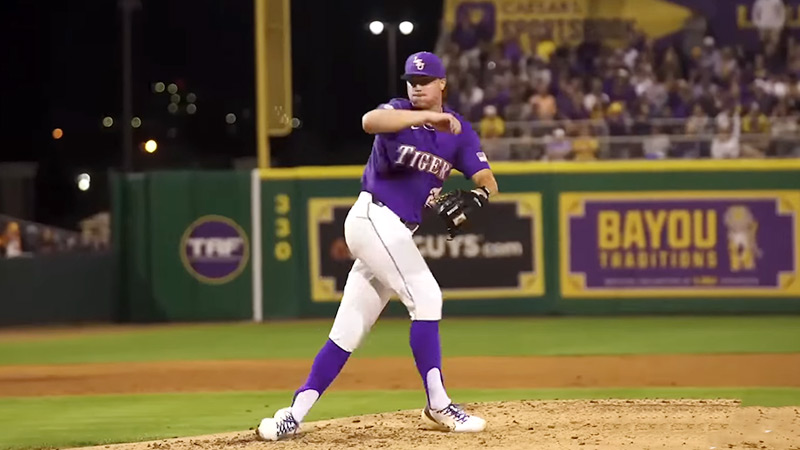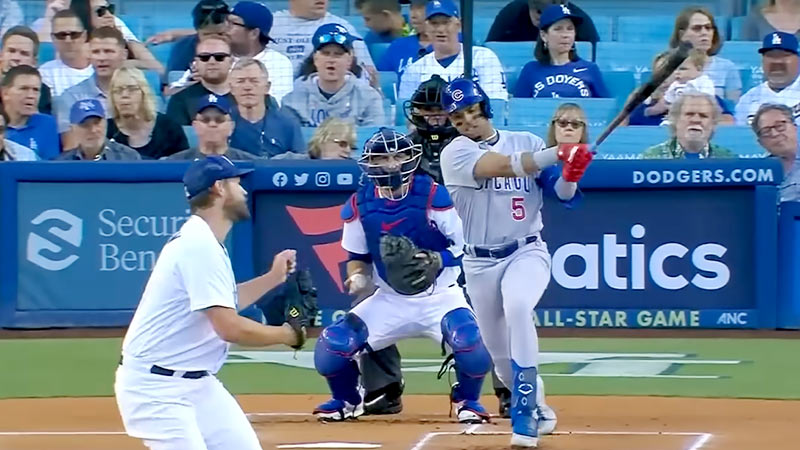Baseball, often referred to as America’s pastime, has captured the hearts of fans for generations. However, in recent years, concerns have arisen regarding the pace of play in the game.
To address these concerns, baseball governing bodies have implemented a series of pace-of-play rules aimed at enhancing the overall experience for players and spectators alike.
In this article, we will delve into the intricacies of baseball pace of play rules, explore their significance, and examine their historical importance.
What Are the Baseball Pace of Play Rules?
Baseball pace of play rules is a set of regulations established by Major League Baseball (MLB) and other baseball organizations with the goal of maintaining a steady and engaging rhythm throughout the game.
These rules aim to streamline gameplay, reduce unnecessary delays, and ensure that the sport remains compelling to both casual fans and avid supporters.
The Baseball Pace of Play
One of the primary rules introduced to expedite the game is the implementation of a pitch clock. This clock sets a limit on the time a pitcher can take between pitches, promoting a faster tempo of play.
Another significant rule focuses on limiting the number of visits a team can make to the mound during an inning. This restriction prevents excessive delays and encourages efficient communication between players and coaches.
To avoid lengthy delays caused by reviewing plays, MLB has established time limits for umpires to review and make decisions using instant replay. In an effort to maintain momentum and prevent extended breaks, there are no specific time limits between innings for players to transition from defense to offense.
Adjustments have been made to commercial breaks, ensuring they are streamlined to minimize interruptions while still accommodating broadcasters and sponsors.
Explanation of the Rule
Each of the pace-of-play rules serves a unique purpose in expediting the game and enhancing its flow. One of the most notable rules implemented in recent years is the introduction of a pitch clock.
The pitch clock sets a time limit for pitchers to deliver their next pitch once they receive the ball from the catcher. Typically, pitchers have around 20 seconds to release the ball after receiving it, ensuring a faster tempo of play.
This rule aims to minimize unnecessary delays caused by pitchers taking excessive time between pitches, keeping the game moving and engaging for both players and fans.
Another significant rule focuses on limiting the number of visits a team can make to the mound during an inning. In the past, teams could freely communicate and strategize on the pitcher’s mound, leading to extended delays.
However, with the implementation of this rule, teams are now limited to a certain number of mound visits per inning, encouraging more concise and efficient discussions. This helps maintain the game’s momentum and prevents unnecessary interruptions, ensuring a more seamless experience.
The use of instant replay in baseball has become increasingly common for reviewing close calls and making accurate decisions.
To prevent lengthy delays caused by extended replays, MLB has established time limits for umpires to review and make decisions using instant replay.
Situations Where Baseball Pace of Play Rules Apply
Baseball pace of play rules come into effect in various situations throughout a game, promoting a consistent tempo and reducing unnecessary downtime. Here are a few examples of where these rules apply.
Batter’s Box
To maintain a steady pace, batters are encouraged to promptly enter and remain in the batter’s box between pitches. This rule prevents unnecessary delays caused by batters stepping out of the box excessively or taking excessive time to adjust their equipment.
Transitioning Between Innings
The pace of play rules also governs the time between innings. Players are expected to efficiently transition from defense to offense, taking their positions promptly at the beginning of each inning. This helps maintain the flow of the game, minimizing breaks and maximizing playing time.
Pitching Changes
When a pitching change occurs, the pace of play rules apply to ensure a smooth transition. Pitchers are expected to complete their warm-up throws within a designated time frame, preventing unnecessary delays during this critical phase of the game.

Commercial Breaks
While commercials are a necessary part of broadcasting and financing the game, the pace of play rules also aim to optimize commercial breaks. The rules ensure that these breaks are streamlined and coordinated to minimize interruptions without compromising the financial aspects of the game.
Instant Replay Reviews
The pace of play rules also governs the time allocated for umpires to conduct instant replay reviews. These reviews must be conducted within a specified time limit to prevent excessive delays and maintain the overall flow of the game.
By implementing pace-of-play rules in these situations, baseball authorities strive to strike a balance between maintaining the strategic aspects of the game and keeping the overall tempo engaging for players and spectators.
These rules aim to minimize unnecessary interruptions, enhance the game’s excitement, and ensure a more enjoyable experience for all involved.
Baseball Pace of Play Rules in MLB
Major League Baseball (MLB) has taken a proactive approach to address concerns about the pace of play in the game.
The league has implemented several pace-of-play rules over the years, continuously refining and adapting them to strike a balance between maintaining the integrity of the sport and addressing the desire for a faster tempo.
One of the most notable rules introduced by MLB is the pitch clock. The pitch clock sets a specific time limit for pitchers to deliver their next pitch after receiving the ball from the catcher. Typically, this time limit ranges from 15 to 20 seconds.
The pitch clock aims to minimize the time taken between pitches, ensuring a more continuous flow of the game. Failure to deliver a pitch within the allotted time results in a violation of the rule and the umpire may call a ball or impose penalties, such as warning or fines, depending on the circumstances.
Another crucial rule pertains to the limitation of visits to the mound. Previously, teams could make unlimited visits to the mound during an inning, causing unnecessary delays.
However, to expedite the game, MLB implemented a restriction on the number of visits a team can make within a specific timeframe.
Each team is allowed a limited number of mound visits per game, including visits from managers, coaches, and players. Exceeding the permitted visits can result in penalties, such as fines or ejections.
Penalties Against the Baseball Pace of Play Rules
To enforce compliance with the pace of play rules, MLB has established penalties for violations. These penalties are designed to incentivize players, coaches, and teams to adhere to the regulations and maintain a swift game tempo.
For instance, if a pitcher fails to deliver a pitch within the specified time limit imposed by the pitch clock, the violation can result in a ball being awarded to the batter. This penalty serves as a warning to the pitcher to expedite their delivery and keep the game moving.
Repeated or deliberate violations of the pace of play rules can lead to more severe consequences. In some cases, fines may be imposed on players, coaches, or teams that repeatedly disrupt the flow of the game.
In extreme cases where a player or team consistently and flagrantly disregards the pace of play rules, ejections can be issued by the umpires or league officials.
This serves as a strong message that the league is committed to maintaining an efficient and captivating game experience for players and fans alike.
By implementing penalties against the pace of play rule violations, MLB aims to create accountability and encourage a cultural shift within the sport.
These penalties, whether in the form of warnings, fines, or ejections, send a clear message that adherence to the pace of play
Significance of the Baseball Pace of Play Rules
The significance of baseball’s pace of play rules lies in their ability to enhance the overall experience of the game. By reducing unnecessary delays and streamlining gameplay, these rules ensure a faster, more dynamic, and more engaging sport.
The rules cater to the demands of modern audiences who seek fast-paced entertainment, capturing and retaining their attention. Moreover, by maintaining a brisk tempo, baseball remains competitive against other sports and attracts new fans.
The significance of pace-of-play rules extends beyond mere game duration; it represents a commitment to evolving with the times while preserving the essence of the sport, ensuring its longevity and continued relevance in the ever-changing sports landscape.
Historical Importance of Baseball Pace of Play Rules
The evolution of baseball pace of play rules reflects the sport’s ongoing commitment to adapt and improve.
From the introduction of the designated hitter to the implementation of instant replay, each new rule has aimed to balance tradition with modernity.
Understanding the historical context of these rules provides insights into the challenges faced by the sport and highlights its dedication to embracing change while preserving the essence of the game.
FAQs
Do the pace of play rules impact the strategic aspects of baseball?
While pace-of-play rules aim to expedite the game, they are designed to minimize unnecessary delays rather than significantly altering the strategic elements of baseball. The rules focus on streamlining transitions and reducing downtime without fundamentally changing the nature of the sport.
How does the pace of play rules affect the performance of pitchers?
The pace of play rules often requires pitchers to work more efficiently and limit their time between pitches. This can affect their rhythm and potentially impact their performance. However, many pitchers have adapted and found ways to maintain their effectiveness within the established time limits.
Have pace of play rules been successful in shortening game durations?
Yes, the implementation of pace of play rules has generally resulted in shorter game durations. While the impact may vary from game to game, the rules have contributed to a more efficient and streamlined experience for both players and fans.
Do pace of play rules apply to all levels of baseball?
While the specific rules may vary between leagues and levels of play, the concept of the pace of play is widely recognized and implemented across various baseball organizations. The extent of the rules’ application may depend on the level of competition and the governing body.
How does the pace of play rules enhance the spectator experience?
By reducing downtime and maintaining a brisk pace, the pace of play rules keeps spectators engaged throughout the game. The enhanced flow of play ensures that fans are consistently immersed in the action, resulting in a more captivating and enjoyable viewing experience.
Bottom Line
Baseball’s pace of play rules has become a vital component in modernizing and revitalizing the sport. By establishing guidelines to streamline gameplay and reduce delays, these rules contribute to a more exciting and dynamic experience for players and spectators alike.
While maintaining the strategic essence of the game, the pace of play rules ensures that baseball remains relevant in a rapidly evolving sports landscape.
As the sport continues to adapt and embrace change, the implementation and evolution of these rules will be pivotal in sustaining the enduring allure of baseball for generations to come.







